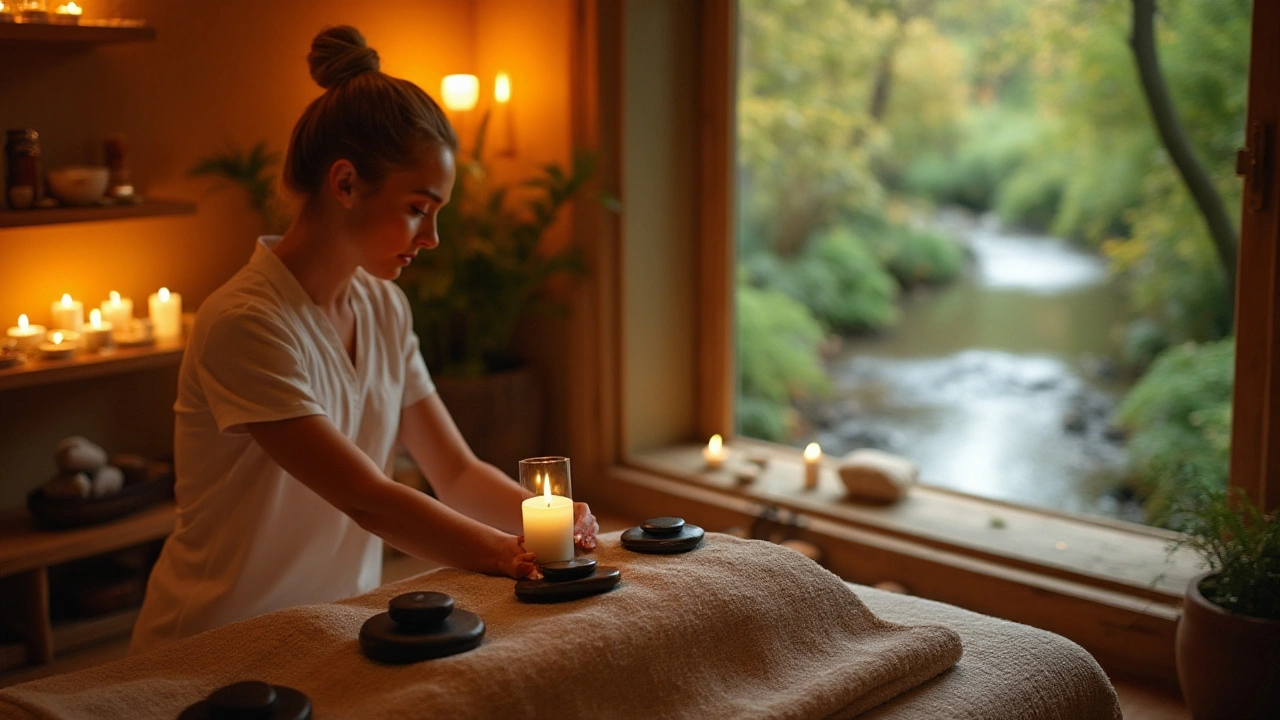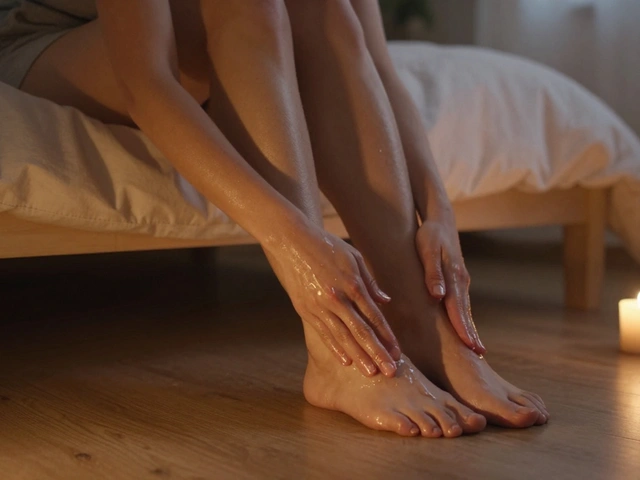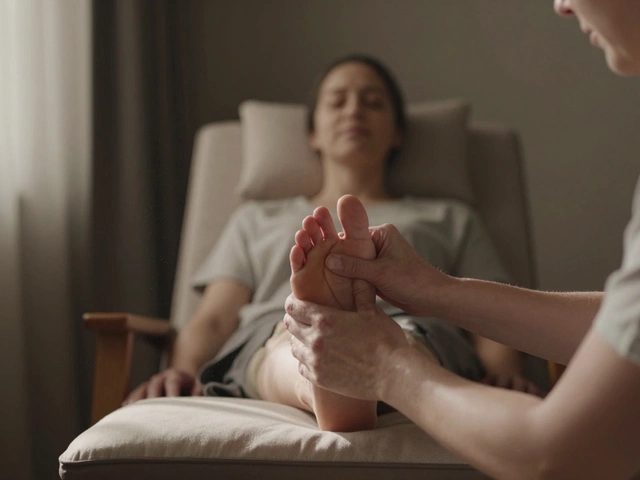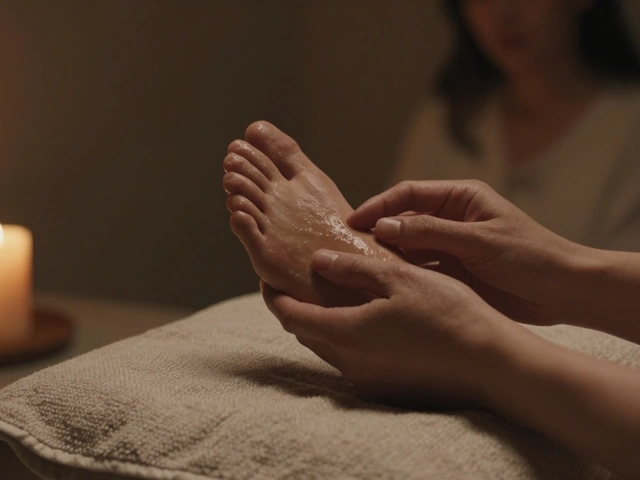Imagine lying comfortably, warm stones gently placed along your spine, melting away the day's tension. This is the serene embrace of stone therapy, a practice that speaks to both the body and soul. From ancient cultures who first harnessed the power of natural stones to modern spas refining the technique, stone therapy holds a timeless appeal.
The practice is both art and science, using heated basalt stones or cooled marble stones to target and unlock the body's physical and emotional stresses. Beyond just the temperature of the stones, it's about the nuanced placement and the intricate dance of warmth and touch that lulls even the tensest back into relaxation.
For those seeking a deeper understanding or thinking of incorporating this into a wellness routine, let's embolden your journey with insights into this pleasingly primal yet sophisticated therapy.
- The Origins and Evolution of Stone Therapy
- Understanding the Benefits of Stone Therapy
- How Stone Therapy Enhances Relaxation
- Tips for Experiencing Stone Therapy
- Incorporating Stone Therapy into Your Routine
- Precautions and Considerations
The Origins and Evolution of Stone Therapy
The practice of stone therapy has roots that dig deep into ancient history, spanning cultures and continents. It is believed that the origins of using stones in therapeutic practices date back thousands of years to early human civilizations. The Native Americans, for instance, were among the first to use heated stones as a means to alleviate muscle pain and improve overall well-being. In China, as early as 2000 BC, hot stones were used to improve the function of internal organs through placement on specific body parts. Their understanding of the medicinal properties of stones infused traditional healing methods with a mystique and reverence for nature's natural warmth.
The spread of stone therapy over the ages tells an incredible tale of cultural exchange and adaptation. In Hawaii, for example, the art of using heated volcanic stones was an integral part of the practice known as 'Lomilomi', a massage technique that promoted healing and harmony. This knowledge, passed down through generations, underscores the sacred relationship between humans and the earth. Similarly, in Japan, the technique evolved to incorporate contrasting temperatures, adding an element of cold therapies using chilled stones, which proved to be a transformative practice for rejuvenation.
As stone therapy moved West, it was embraced and further refined by modern medicine practitioners. It was in the 1990s when Mary Nelson, an American massage therapist, popularized the stone massage in the United States by combining traditional methods with contemporary insights, creating what we know today as hot stone massage. She recognized its potential to provide deeper penetration through muscle layers, making it a staple in spas worldwide. Her innovation has led to a rejuvenation of this ancient practice, making it an accessible and popular treatment option for many seeking relaxation and pain relief.
"Every stone has a story to tell... each carries the memory of their journey through time," said Mary Nelson, highlighting the spiritual and historical significance of using stones in therapy.
Today, the evolution of stone therapy continues as more research is conducted and therapists expand upon the traditional techniques to suit individual client needs. This ancient practice has become a modern wellness staple, celebrated not just for its effectiveness but for the comforting connection it fosters between us and the natural world. As modern science meets these age-old techniques, there's a growing body of evidence suggesting that incorporating stones into massage therapy can significantly enhance physiological and emotional well-being. Table:
| Stone Type | Uses |
|---|---|
| Basalt | Heat retention, relaxation |
| Marble | Cooled, inflammation reduction |
Understanding the Benefits of Stone Therapy
When it comes to finding a path to genuine relaxation, stone therapy strides forward as a compelling choice rooted in centuries of practice. The method employs a dual approach of heat and touch, which when combined, can unlock myriad health benefits. One of the primary advantages is its ability to relieve stress. The warmth from the stones helps muscles to relax, allowing therapists to work deeper into the knots of stress and tension around the body. The repeated application of hot and sometimes cold stones serves as a stimulus to open up energy paths, promoting a sense of calmness.
Moreover, beyond mere relaxation, stone therapy enhances blood circulation. The heat from the stones, as they are placed on the body, increases capillary fluid exchange, leading to improved circulation. This improved flow not only warms muscles but also brings vital nutrients to tissues, accelerating healing. This means that massage through stone therapy rejuvenates the body on a cellular level, promoting overall health. Skilled therapists know that the appropriate temperature of stones can also aid in lymphatic drainage, supporting the body's detoxification process.
Emotional and Mental Benefits
Above and beyond these physical benefits, stone therapy also offers emotional and psychological rewards. It's a holistic healing process catering to the mind, body, and soul. The stresses of daily life often become embedded not just in our muscles, but in our mental state as well. Stone therapy, by inducing deep tranquility, serves as a reset button for the harried mind. Recent surveys suggest that individuals who partake in regular stone therapy report changes in their ability to manage stress. Additionally, the rhythmic nature of the treatment encourages a meditative state, pushing worries and anxieties aside, even if just momentarily.
"The feeling of the stones against the skin is nurturing, grounding, and calming. It's a sensory experience like no other," says Dr. Elaine Morrow, an expert in alternative therapies.
The practice's effort to synchronize the body’s energy flow also plays a part in these emotional effects. Many traditional therapies emphasize the importance of balancing energy chakras, and stone therapy, through the precision of stone placement, is a tool in harmonizing these energy centers. Whether you're looking to unwind or seeking relief from chronic stress-induced conditions, stone therapy provides a sanctuary unmatched in its relaxing capacity. This goes a long way in showing why it remains a favorite among wellness enthusiasts worldwide.
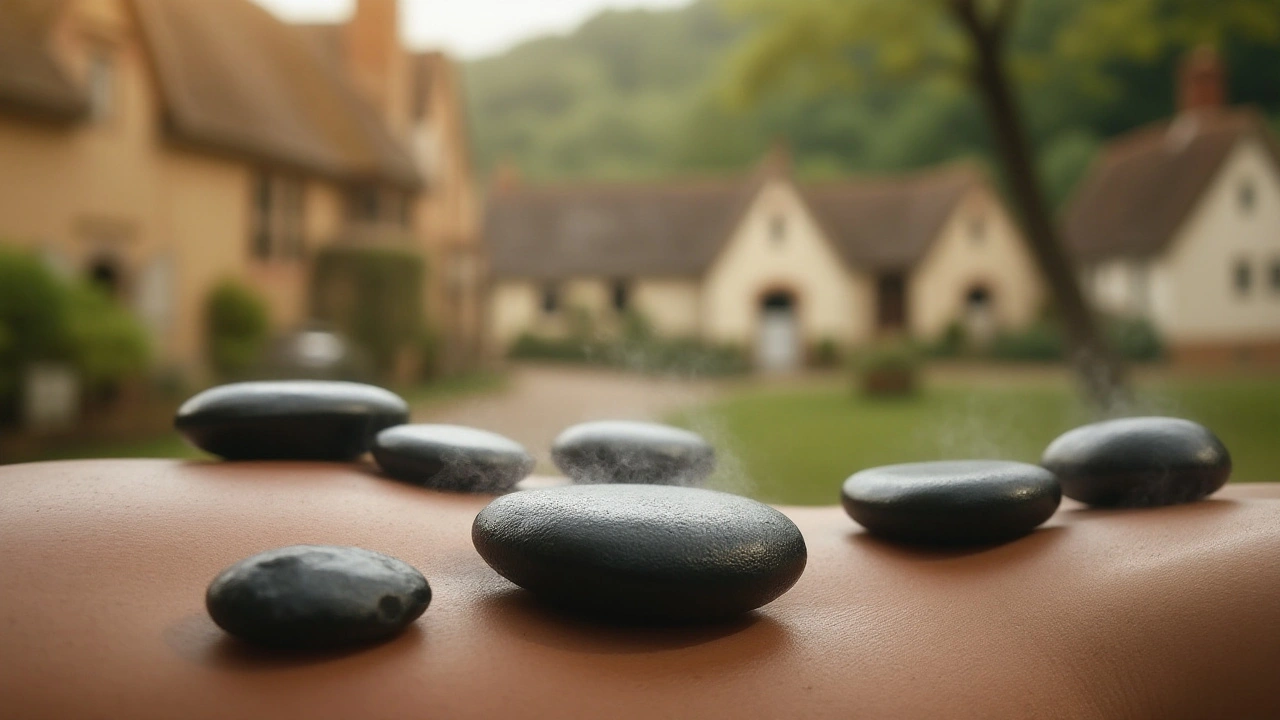
How Stone Therapy Enhances Relaxation
Stone therapy is an intricate marriage between natural elements and the gentle, healing power of touch. The technique employs a mixture of heated basalt stones and, occasionally, cooled marble stones to reach deep into muscle tissues. This dual action is key in initiating a profound sense of relaxation that many struggle to achieve merely through standard massage. The stones are methodically placed on specific energy points of the body, a practice that has roots in ancient Ayurvedic and Native American traditions.
One of the essential aspects of stone therapy is the way the heat interacts with the body. As the warmth radiates from the stones, blood vessels expand, encouraging increased circulation and oxygen flow. This process not only accelerates the natural healing of damaged tissues but also brings about a tranquility rivaled by few other practices. The consistent application of heat dissolves knots of tension within the muscles, providing relief from chronic pain and discomfort. Additionally, as the cold stones constrict blood vessels, they help reduce inflammation, achieving a balance that the body finds comforting.
Dr. Andrew Weil, a renowned integrative medicine specialist, noted the exceptional effects that stone therapy can have on individuals dealing with stress-related conditions.
"The strategic application of heated stones can act as a natural sedative for the nervous system, promoting restful states while reducing anxiety," he has written.This kind of tactile therapy impacts not only the physical shell of the body but extends its benefits to the mind, curbing cycles of stress and anxiety.
The sensory journey of stone therapy does not end with the temperature variations. Often, practitioners integrate aromatherapy and soothing music to deepen the relaxation experience. These elements work in harmony with the stones to create a sensory symphony, immersing clients in a wholly nurturing environment. It's important to understand that stone therapy is not a one-size-fits-all technique. Each session is carefully tailored to the needs of the individual, ensuring the placement and movement of the massage stones are in accordance with what's most beneficial for them.
This holistic method goes beyond mere relaxation—it is a nurturing experience that reconnects individuals with the deep-seated calm we all carry within. It's not uncommon to hear clients describe their stone therapy sessions as akin to meditative retreats. As practitioners guide the stones along the body's meridian pathways, there's a tangible shift in energy, washing peace over areas that previously held tight to stress.
For those looking to incorporate stone therapy into a wellness plan, it's wise to consult with licensed therapists who can offer insights tailored to personal health profiles. Regular sessions can significantly impact overall well-being, contributing positively not just physically, but also emotionally and mentally. As such, stone therapy stands as testament to the timeless belief that harmony between nature and humanity unlocks true relaxation and healing.
Tips for Experiencing Stone Therapy
Diving into the world of stone therapy isn't just about showing up at your local spa and hoping for the best. To truly make the most out of this ancient relaxation technique, there are certain tips and tricks that can elevate your experience to a whole new level. First and foremost, it’s all about choosing the right practitioner. Just as artists have different styles, so do massage therapists. Look for someone who specializes in stone therapy and has glowing reviews from clients who have left sessions both relaxed and rejuvenated. A skilled practitioner will not only have a keen understanding of anatomy but also a gentle touch that respects the body's boundaries while coaxing it into serenity.
Preparation is key when you're looking forward to a session. It starts long before you arrive at the spa. Ensure you are well-hydrated before your appointment, as the massage and warmth from the stones can dehydrate you. Arrive early to allow your mind to settle and your senses to acclimate to the calming environment; those minutes of tranquility make all the difference. Discuss any specific areas you want addressed with your therapist beforehand, since personalized communication helps tailor the experience to suit your needs. It's your session—be proactive about your own comfort.
Understanding the sensations you will encounter is equally important. During the session, the therapist will gently place the heated stones on key points of your body. These could range from your back, stomach, chest, face, palms, or feet, depending on which areas are tight and in need of care. Remember that comfort is the goal, not sheer heat. If you ever feel a stone is too hot or not providing enough warmth, simply communicate with your therapist. It's crucial that you’re in control of your comfort level during the therapy.
As Dr. Anna Griffith, a well-regarded expert in alternative therapies, once noted, "The combination of natural stones and human interaction can elicit profound therapeutic responses that go beyond the physical."
Aftercare is another aspect to think about. Once your session wraps up, it's beneficial to give your body time to absorb the full effects. Avoid strenuous activities directly after your appointment. Instead, allow your body to rest and process the work that’s been done—this might mean reading a book, watching something that makes you smile, or even taking a breezy nap. Keep hydrating throughout the day to help flush out the toxins that the therapy may have stirred up. This isn't just a pampering session; it's an ongoing healing process that you can savor over hours or even days.
If it's your first time experiencing stone therapy, you might be wondering how often you should indulge in this treat. Ideally, this practice can be a great monthly ritual to keep stress at bay and maintain a state of relaxation. Like any therapy, consistency amplifies benefits, but it also depends on personal preference and how your body responds. Many enthusiasts believe monthly sessions provide a reset for the body's energy, aligning both physical and mental wellness.
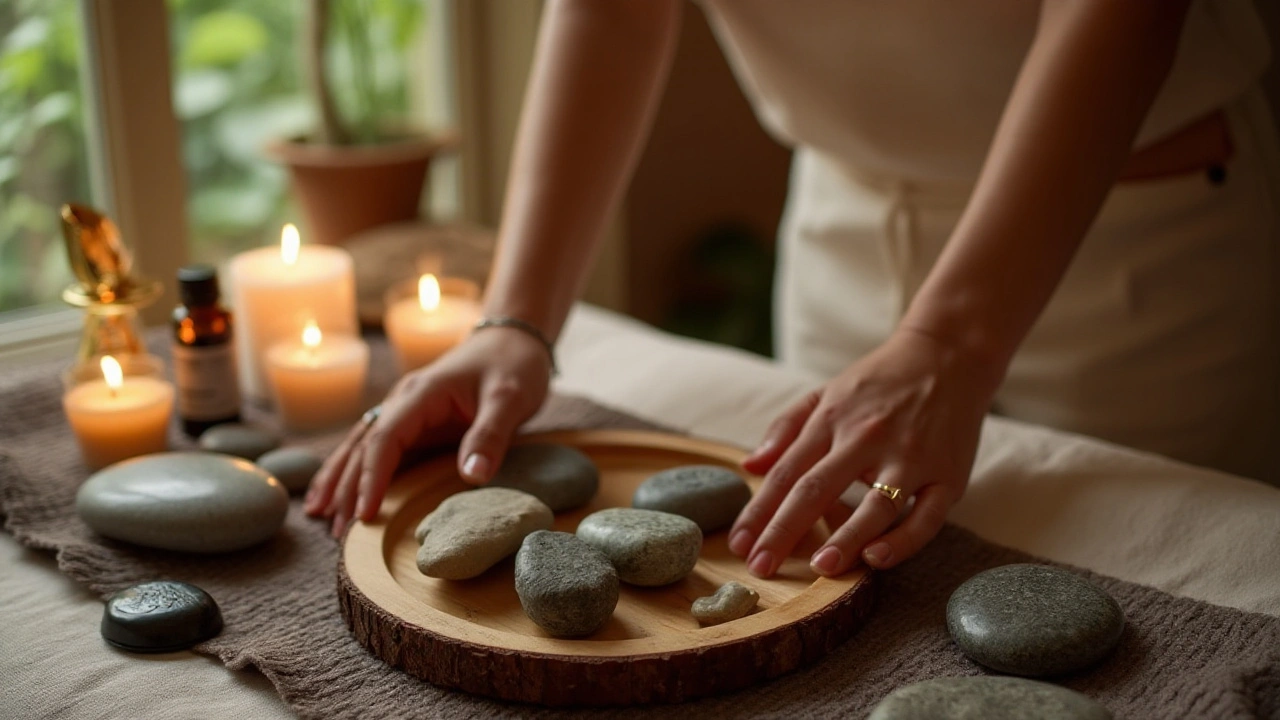
Incorporating Stone Therapy into Your Routine
Incorporating stone therapy into your wellness practice is more accessible than you might imagine, whether you're interested in exploring it at home or integrating it into your visits to a spa. As with any practice that involves physical health, the key is consistency and understanding the nuances that make stone therapy uniquely beneficial for body and mind. Familiarizing yourself with everything from the right kind of stones to the specific temperatures can make this a deeply rewarding experience.
An essential first step is the selection of the stones themselves. Basalt stones are highly recommended due to their smooth surface and excellent heat retention. Choosing the right stones involves considering their size and weight; smaller stones may be perfect for the face or hands, while larger ones can work wonders on the back or legs. It was once said by a renowned therapist, "The stone does half the work, it is the pathway that leads to self-discovery."
Temperature plays a critical role in how effective your home sessions can be. It's generally advised that the stones reach between 130 to 145 degrees Fahrenheit, a temperature range that is both soothing and safe. To ensure this, consider investing in a quality stone heater, which can maintain the desired temperature without risk. An alternative for smaller stones could be simply warming them in hot water.
Adding stone therapy to your routine isn't solely about the heat, though; mindful placement is vital. Lay the stones along the spine or on the meridian points of the body to stimulate blood circulation and promote a sense of deep relaxation. This ancient technique is not merely about placing warmth but about encouraging the body's own healing.
In terms of frequency, consider incorporating stone therapy into your relaxation rituals once a week. Such regularity not only helps relieve stress but also fosters a deeper connection with oneself. For detailed self-care, consider coupling stone therapy with aromatherapy by using essential oils like lavender or eucalyptus. This combination can enhance the therapeutic effects, providing a holistic wellness experience.
Finally, don't overlook the benefits of consulting a professional therapist. While home sessions are feasible, occasional visits to a therapist skilled in stone therapy can provide new insights into enhancing your practice. Remember, it's all about finding what works best for you, helping you achieve a balanced state of relaxation and rejuvenation.
Precautions and Considerations
When indulging in the soothing embrace of stone therapy, it's crucial to understand that, like any therapeutic technique, it requires cautious application to maximize its benefits and avoid discomfort. At its heart, stone therapy involves placing heated or chilled stones on the skin, which can sometimes lead to adverse reactions if not done carefully. Individuals with certain pre-existing conditions should be aware of the potential risks. Those with circulatory issues, for instance, may find that the heated stones exacerbate their condition, leading to discomfort or more severe complications.
Not every therapy session suits every individual, particularly those sensitive to temperature changes. People with diabetes or sensitive skin conditions should approach stone therapy with caution. The differing temperature of the stones could cause thermal stress or provoke skin reactions. It's advisable to inform the therapist of any medical history or special conditions. This way, they can tailor the session to your specific needs, perhaps by adjusting the temperature of the stones or avoiding certain pressure points altogether. As an additional safety measure, always verify the stones' temperature before placing them on extra-sensitive areas.
"Safety in spa treatments is about communication and knowing your body's limits," suggests Dr. Ming, a well-regarded holistic therapist. "Be sure to speak up if you feel uncomfortable at any point during the session."
Seasoned therapists often recommend avoiding stone therapy if you have open wounds or cuts, as this can introduce further risks, such as infections. Pregnancy is another state where caution is advised. Consult with a healthcare professional to determine if the benefits of stone therapy outweigh the risks during pregnancy. Lastly, balance is key. Even though the warm tranquility offered by stone therapy is incredibly tempting, it is often recommended not to have these sessions too frequently. This ensures that the body has ample time to adjust and benefit from each session before the next one.
In a world where wellness therapies are continuously evolving, stone therapy remains one of the most revered. Still, an informed approach is the safest gateway to achieving the full potential of its relaxation and therapeutic benefits. Listening to your body, heeding expert advice, and maintaining open communication with your therapist are the best practices to ensure safety and achieve the desired effect.

